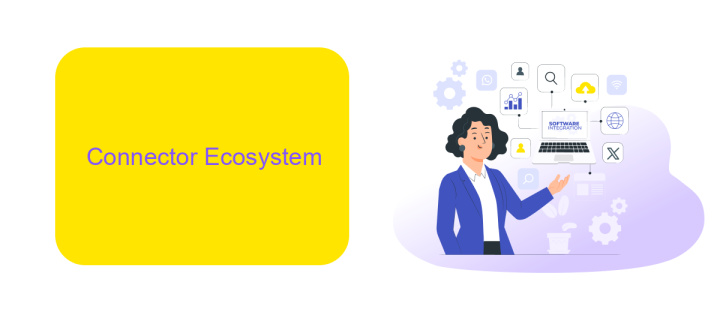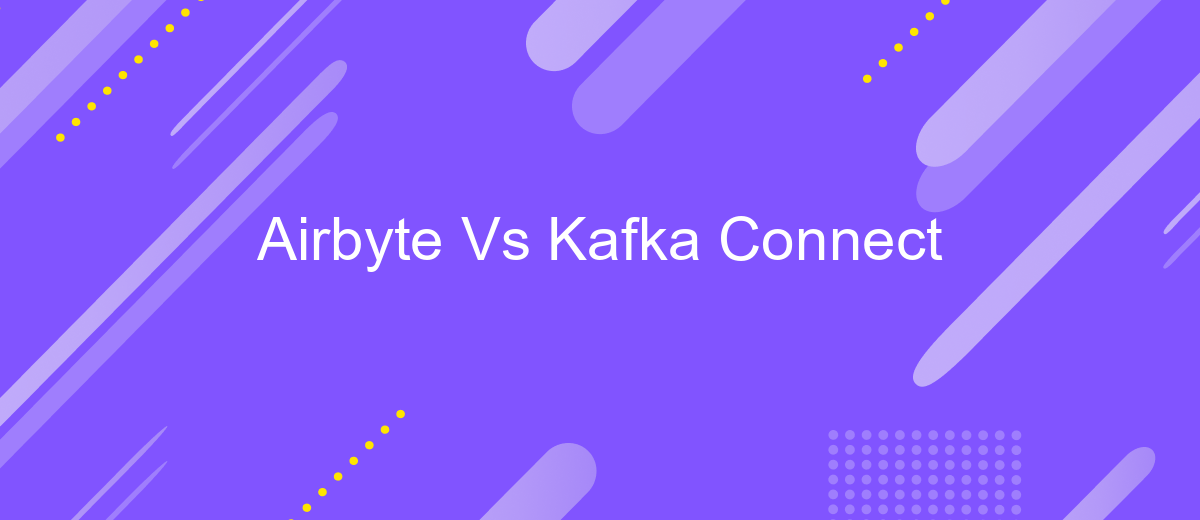Airbyte Vs Kafka Connect
In the rapidly evolving landscape of data integration, businesses are constantly seeking efficient ways to move and transform data across diverse systems. This article delves into a comparative analysis of Airbyte and Kafka Connect, two prominent tools in the data integration ecosystem. By examining their features, strengths, and use cases, we aim to provide insights to help organizations make informed decisions.
Introduction
In the rapidly evolving landscape of data integration, choosing the right tool for your specific needs can be a daunting task. Airbyte and Kafka Connect are two prominent solutions that offer robust capabilities for data integration and real-time data streaming. Understanding their differences and unique features is crucial for making an informed decision.
- Airbyte: An open-source data integration platform that allows you to synchronize data from various sources to your data warehouse or database.
- Kafka Connect: A component of Apache Kafka that enables scalable and reliable streaming of data between Kafka and other systems.
Both tools have their own strengths and ideal use cases. While Airbyte excels in its flexibility and user-friendly interface, Kafka Connect is renowned for its robust performance in real-time data streaming. For businesses looking to streamline their data integration processes, platforms like ApiX-Drive can also be considered to simplify and automate the setup of integrations, making it easier to manage data flows across various applications and systems.
Connector Ecosystem

Airbyte and Kafka Connect both offer extensive connector ecosystems, but they cater to different needs and use cases. Airbyte provides a wide array of pre-built connectors that are open-source and easily customizable, making it a versatile choice for businesses looking to integrate various data sources. These connectors cover popular databases, APIs, and cloud services, ensuring that users can seamlessly connect their data pipelines. Additionally, Airbyte's community-driven approach encourages contributions, continuously expanding its ecosystem.
On the other hand, Kafka Connect, an integral part of Apache Kafka, focuses on real-time data streaming and offers connectors that are optimized for high-throughput and low-latency data transfer. Its ecosystem includes a variety of connectors for databases, message queues, and cloud storage solutions. For those looking to simplify the integration process, services like ApiX-Drive can be invaluable. ApiX-Drive provides a user-friendly platform to configure and manage integrations without the need for extensive coding, making it easier to leverage both Airbyte and Kafka Connect connectors effectively.
Transformation Capabilities

When considering transformation capabilities, both Airbyte and Kafka Connect offer robust solutions, but they differ in execution and flexibility. Airbyte provides built-in transformation features that allow users to modify data as it moves between sources and destinations. This is particularly useful for businesses that need to perform simple transformations without extensive coding.
- Airbyte includes a user-friendly interface that simplifies the transformation process, making it accessible even for non-technical users.
- Kafka Connect, on the other hand, relies heavily on Kafka Streams for transformations, which requires a deeper understanding of stream processing and programming skills.
- For more complex transformations, Airbyte users can leverage external tools and services like ApiX-Drive to automate and customize their data workflows seamlessly.
In summary, Airbyte's transformation capabilities are more user-friendly and accessible, making it a better choice for simpler, straightforward data modifications. Kafka Connect excels in more complex scenarios but demands a higher level of technical expertise. Depending on your specific needs and technical proficiency, either tool can be highly effective for managing data transformations.
Operational Features

When comparing Airbyte and Kafka Connect, operational features play a crucial role in determining the suitability of each tool for different use cases. Both platforms provide robust capabilities, but they differ significantly in their operational aspects.
Airbyte is designed with a focus on ease of use and flexibility, allowing users to quickly set up and manage data integration pipelines. It offers an intuitive user interface and extensive support for various data sources and destinations. Airbyte's modular architecture enables seamless scaling and customization.
- Intuitive user interface for easy setup and management
- Extensive support for diverse data sources and destinations
- Modular architecture for scalability and customization
- Community-driven connectors for rapid expansion
On the other hand, Kafka Connect excels in handling high-throughput, low-latency data streams. It is optimized for real-time data processing and is deeply integrated with the Kafka ecosystem. While it may require more technical expertise to set up and manage, its performance and reliability make it a preferred choice for mission-critical applications. For users seeking a simpler integration setup, services like ApiX-Drive can bridge the gap, offering automated solutions for connecting various platforms.
Conclusion
In conclusion, both Airbyte and Kafka Connect offer robust solutions for data integration, but they cater to different needs and use cases. Airbyte excels with its user-friendly interface, extensive connector support, and flexibility for custom integrations, making it a strong choice for teams looking to quickly set up and manage data pipelines without extensive coding. On the other hand, Kafka Connect is ideal for organizations that require high-throughput, real-time data streaming capabilities and are already invested in the Kafka ecosystem.
When choosing between Airbyte and Kafka Connect, consider your team's technical expertise, the complexity of your data workflows, and your long-term scalability needs. Additionally, leveraging integration services like ApiX-Drive can further simplify the process, providing a seamless way to connect various applications and automate data flows. Ultimately, the right choice will depend on your specific requirements and the existing infrastructure of your organization.
- Automate the work of an online store or landing
- Empower through integration
- Don't spend money on programmers and integrators
- Save time by automating routine tasks
FAQ
What are the primary use cases for Airbyte and Kafka Connect?
How do Airbyte and Kafka Connect handle scalability?
What are the main differences in setup and configuration between Airbyte and Kafka Connect?
Can Airbyte and Kafka Connect be used together?
What options are available for automating and managing integrations in Airbyte and Kafka Connect?
Do you want to achieve your goals in business, career and life faster and better? Do it with ApiX-Drive – a tool that will remove a significant part of the routine from workflows and free up additional time to achieve your goals. Test the capabilities of Apix-Drive for free – see for yourself the effectiveness of the tool.


